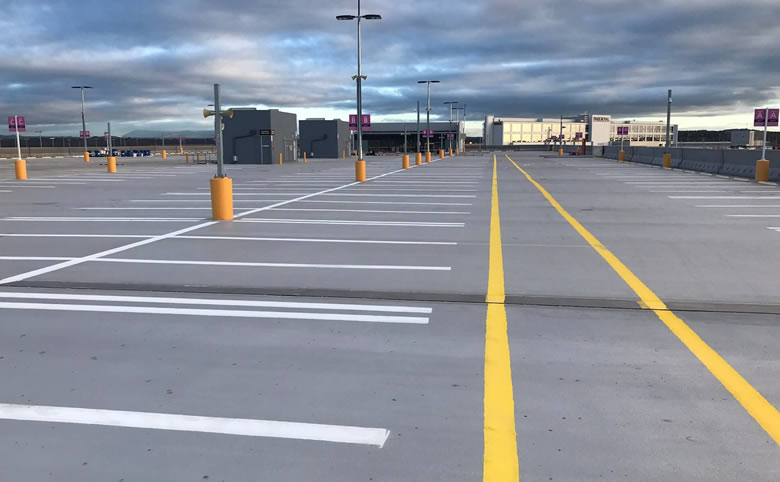You don't want to take any chances when it comes to safety. Whether it's for a parking lot, a construction site or a warehouse, line marking is essential to guarantee that all traffic, whether pedestrian or vehicular, flows through securely. Whether it’s on epoxy flooring or any other surface on roadways, line markings are the best way to make it more secure.
While most people commonly associate line marking with roads and car parks, it’s an essential safety and traffic management service. It’s used across a range of industries and workplaces, including construction sites, warehouses and depots, storage facilities, manufacturing facilities, sports and entertainment venues and more.
If you need commercial line marking services, you should always look at getting in a professional line marking contractor. In most cases, line marking is required in heavily trafficked areas for important reasons. Professional contractors can lay down lines to exact specifications. They will be durable and will not fade or be worn away by heavy traffic.
The following are some of the important pointers to keep in mind for maintaining the line-markings:
Make Sure the Floor Is Properly Prepared Beforehand
Proper installation is essential to guarantee that line markings persist for years. Remove any existing tape or paint from the floor before you add any line-markings. Fresh line-markings should never be placed on top of previous line-markings, as this can cause your new tape or paint to peel. Begin by drawing a straight guideline for you to follow after the floor is clean and dry. Using a guiding line to guide you will guarantee that the tape or paint is applied correctly.
Try And Keep the Area as Clean as Possible
Begin applying your line markings once the area has been cleaned. After you've applied your line-markings, make an effort to maintain the space around them clean, and urge your colleagues to do the same. Mop or scrub your line markings as you would the rest of the floor, but don't let pools of water stay around them for long periods of time, since this will weaken them over time. By keeping it clean, you can prevent the accumulation of dirt on its surface, making it visible to the onlookers.
Keep An Eye Out for Any Signs of Wear
Keep an eye on your line markings for signs of any wear and tear. Remove any broken or peeling paint or tape right away to avoid the problem from growing worse. If you find any places that are starting to bubble, you should remove those as well. Whether the line markings are taped ones or painted ones, you’ve to check for any signs of wear and tear on a weekly basis.
Don’t Abuse Line Marking
Because of advancements in line marking tape and paint technology, it can now endure far more than it could previously. Despite this, we nevertheless advise you to be as careful as possible with your line marking. When possible, avoid dry steering the wheels of a vehicle, as well as stopping or accelerating when on or near the line marking, since these movements can prematurely age and destroy it. Employees learn when additional caution is required by installing an internal line marking system in your factory or workshop, whether that means not entering, wearing safety gear, or simply being vigilant.
Train Your Team on How to Care for It Properly
It's critical to train your team on the different ways to care for it if you want your line marking to last. Make sure that all of your personnel understand how to clean the line-markings correctly, and encourage them to look for indications of wear. By following the recommended steps, you can prolong the lifespan of any line-markings.
Keeping all the line markings in good condition will help it to serve the purpose, i.e., to provide safety guidelines or drawing boundaries. If all the processes are marked properly, then it will help to reduce the reliance on signage. Again, this will help to improve efficiency and safety and ensure the uninterrupted flow of traffic. So, follow these simple steps and free yourself from the hassle of investing in the new line-markings.







Follow us